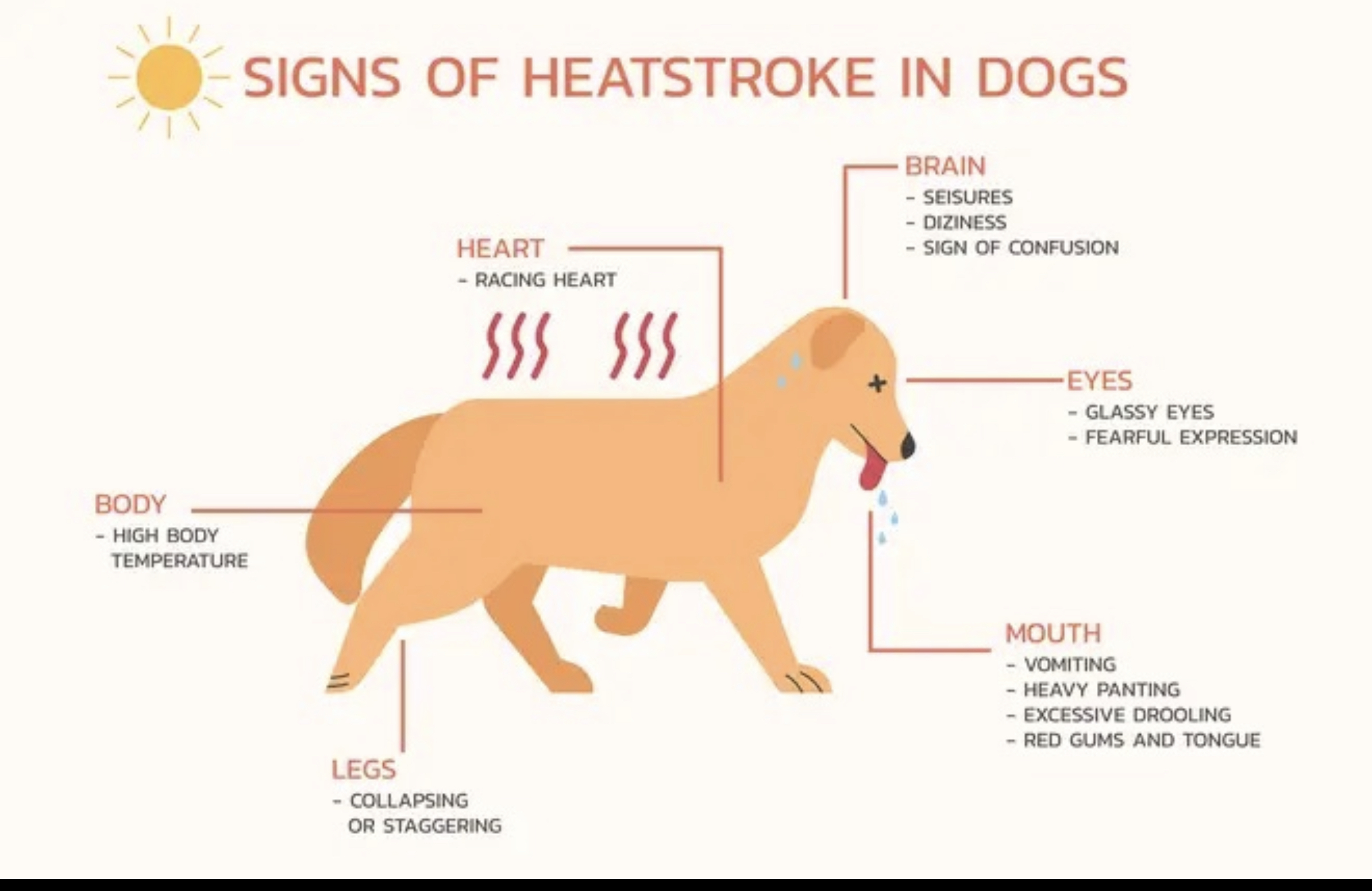
sen·tient /ˈsen(t)SH(ē)ənt/ adjective 1. able to perceive or feel things.
I recently presented at the Institute of Critical Animal Studies (ICAS) conference on “Recognizing Non-Human Animals as Sentient Beings”. I
Weeknights 7PM - Midnight
Weekends 8AM - Midnight

“At the fifth throw she just drops the ball on her way back to me (not like her) and starts walking slowly
and suddenly looked like she’s losing her balance and staggering (uh-oh).”
By Dr. Caroline Simard-Swimmer
Medical Director and Co-Founder, Pets After Dark
In my life as a veterinarian I have seen more than my fair share of heat strokes. From the cat that inadvertently climbed into the dryer to the dog left in a car; I’ve seen it all. Most of these cases are presented with such a high body temperature that even a digital thermometer cannot register them, leading to such severe heat injuries at the cellular level that these patients cannot be saved. While heartbreaking, it is highly preventable.
This is the reason why I always start these conversations with my clients at this time of year. Heat events are actually more common in the spring and early summer, before our dogs have had the chance to acclimate to rising temperatures. And in the modern day that we live in, most of us now have central air conditioning and our pets are even less heat tolerant now than in the past.
I recall an experience of my own last year. I took my (at the time two year old Aussie) Mabel Z outside to get some of her puppy out! It was in the middle of May and although it was early evening and overcast (and not that warm in my opinion) it was one of those really humid days where moisture just sticks to your skin and the air is heavy. As I threw the ball Mabel proceeded to run with all her might, back and forth. At the fifth throw she just drops the ball on her way back to me (not like her) and starts walking slowly and suddenly looked like she’s losing her balance and staggering (uh-oh😳). I swiftly gave her a bowl of water as I realized even with such a short play session, the heat was too much for her. Even as a trained veterinarian I know my pets can fall prey to heat generated disorders, even in a very short period of time. I was lucky to catch this happening in real time even though it was unexpected. The weather took a fast toll on my beloved Mabel Z.
Apart from the obvious, i.e. don’t go jogging with your dog at mid day, I do try to remind people that prevention is key. Common sense things like always having plenty of fresh water available, taking lots of breaks in the shade if possible and remember that it’s much hotter near the pavement for their sensitive paws. Beware of high humidity days, even if overcast. And keep Bull Dogs indoors between March and November! 😂😂
So what’s the best way to cool down a pet at home if we suspect heat exhaustion (i.e. panting heavily)? Evaporative cooling is the key; wet the pet with cool (not cold) water and place the animal near a fan. This is a situation where a visit to a veterinarian might be recommended, even if we think our pet has cooled down.
Treating overheating early will prevent a heat stroke, which is a whole different matter. A heat stroke is defined as a marked elevation of the body temperature (105.5 F and above) with a mortality rate of close to 50%, even with in-hospital treatment. It can have devastating effects on the brain, the renal function, the digestive tract and coagulation of the pet.
As we head into summer, we encourage everyone to enjoy time outdoors with their pets. But always keep in mind, our pets depend on us to keep them safe and healthy. Heat strokes are serious business that can be avoided with a little vigilance and common sense. Now go enjoy the great outdoors!


I recently presented at the Institute of Critical Animal Studies (ICAS) conference on “Recognizing Non-Human Animals as Sentient Beings”. I

Every year around this time pet owners are warned about toxic foods and holiday hazards. And while it’s important to

Life on the Inside: How to Keep Indoor Cats Happy (and Out of Trouble) There’s something fascinating about how differently
Pets After Dark is a subscription-based service that provides expert, local after-hours veterinary care.